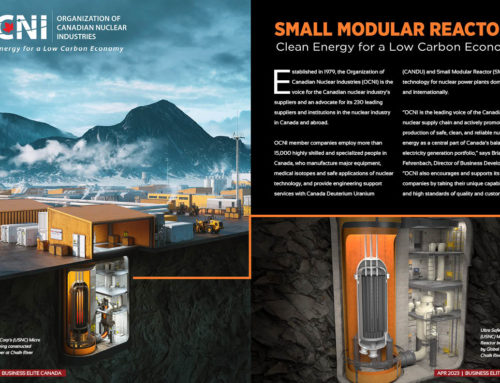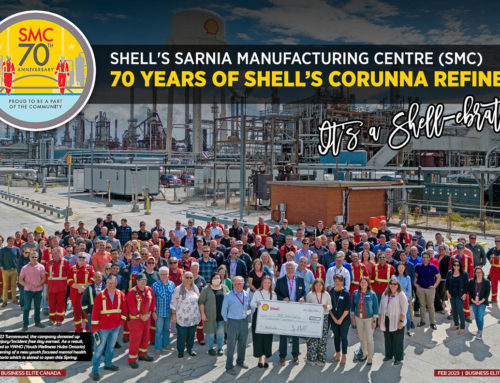Exploring North Of 60
By Anna Guy
 When leading Canadian diamond exploration company Kennady Diamonds won the Company of the Year Award at the Mines & Money Conference, London, England, President Dr. Rory Moore was quick to credit its partners, Aurora Geosciences Ltd.
When leading Canadian diamond exploration company Kennady Diamonds won the Company of the Year Award at the Mines & Money Conference, London, England, President Dr. Rory Moore was quick to credit its partners, Aurora Geosciences Ltd.
“[The Aurora Geosciences team] deserve the lion’s share of credit for the successes that Kennady has enjoyed to date. Their innovative, systematic and dedicated approach to a technically challenging project has resulted in new and unique discoveries, and earned Aurora the respect of its peers in the industry,” Dr. Moore told the crowd.
Experts in the North
With over 30 years of experience in the North, Aurora Geosciences is still on the precipice of some of the most exciting minerals exploration in Canada’s North. The only exploration team based in the North, working across the North and offering the full suite of exploration services required for discovery, the Aurora team has contributed to discoveries and resource definitions at Diavik, Ekati, Meadowbank, Kennady Lake, Keno Hill, Faro, Wolverine, Kudz ze Kayah, the Rackla Belt, White Gold Belt, Greens Creek, Livengood, Bokan Mountain, Whistler, and Red Dog.
In short, Aurora Geosciences provides geological and geophysical services, along with program management services to mineral exploration and mining companies. Clients rely on the team for geological mapping and prospecting, geographical surveying, drilling and geochemical surveying among other services. The team also writes qualifying reports for Canadian securities commissions. Based in Northern Canada, Aurora Geosciences operates from Nunavut to Alaska, with offices in Yellowknife, Whitehorse and Juno.
The Kennady Diamond partnership is a great example of Aurora’s working philosophy in action, which is to stand out with new, fresh, and innovative approach to old challenges. Aurora Geosciences has the leading position in the North through ongoing innovation, research and adaptation of successful exploration methods and technology to northern problems.
“Aurora Geosciences are the operator of the Kennady North project,” says Dr. Moore. “They do everything for us, from research, logistics, field work, and technology. We depend upon them for anything and they are quite simply the best people in the NWT for this type of work.”
“In the case of the Kennady Diamonds kimberlite discovery, we applied new ideas and different approaches to the traditional sequence that companies use to look for diamonds in order to ultimately discover what is the Kelvin Faraday kimberlites,” says Dave White, P. Geo, and President of Aurora Geosciences. “Unless you can think of something new to try, you’re going to keep getting the same answers as before.”
Chris Hrkac, project manager for Aurora Geosciences, adds “We have unrivalled experience in the North. We design, manage and supervise all complex aspects of mineral exploration and resource development, but most importantly we live up here and we understand the challenges associated with that.”
Finding Diamonds
When asked, White described the approach to the Kennady project as such: “The kimberlite bodies had been previously drilled with the expectation that they were, in fact, more typically shaped kimberlite pipes. We took a more open-minded approach. We took another look at the historical data and identified that newer survey techniques and a higher resolution approach was required to delineate and understand the geophysical anomalies.”
In essence, Aurora looked at data without any inference to historical expectation of the body shape, and applied a geophysical survey called “compensative coupled resistivity survey” that isn’t traditionally used in diamond exploration. This garnered the high-resolution data from which the team was able to delineate three kimberlite bodies that were significantly larger in size, says White. “This year, we will continue to support Kennady Diamonds as they move towards turning their deposit into a mine.” In fact, Aurora Geosciences will continue to be very active in the Yukon, with diamond exploration in the NWT remaining its flagship commodity.
Aurora has continually adapted and developed new technology and techniques to sharpen its ability to make mineral discoveries and map the earth’s interior throughout its history. In 1992, the team was the first to apply ground penetrating radar to northern placer exploration. Five years later, it integrated high precision GPS / gravity survey techniques suited to arctic conditions, and then constructed one of the first strap-on non-proprietary helicopter-borne aeromagnetic systems. The adaptation of capacitively-coupled resistivity and total magnetic field triaxial gradiometry systems to kimberlite exploration was followed by the development of innovative IP arrays to detect ore shoots in vein systems in 2009.
For a company rich with history, Aurora Geosciences’ team has a young spirit, one that is fired up every day at the prospect of discovering something new. “We love the challenge of finding new ways to look at old problems. It is exciting, and it is why we are all dedicated to a common goal.”






